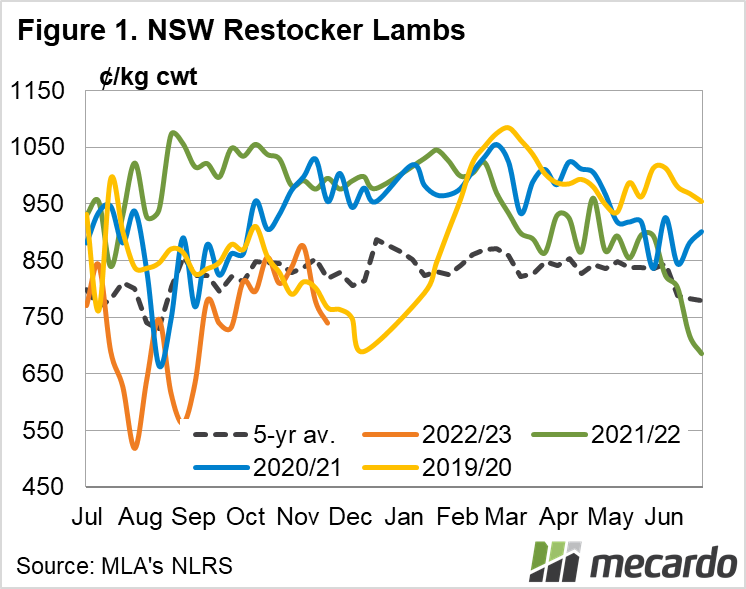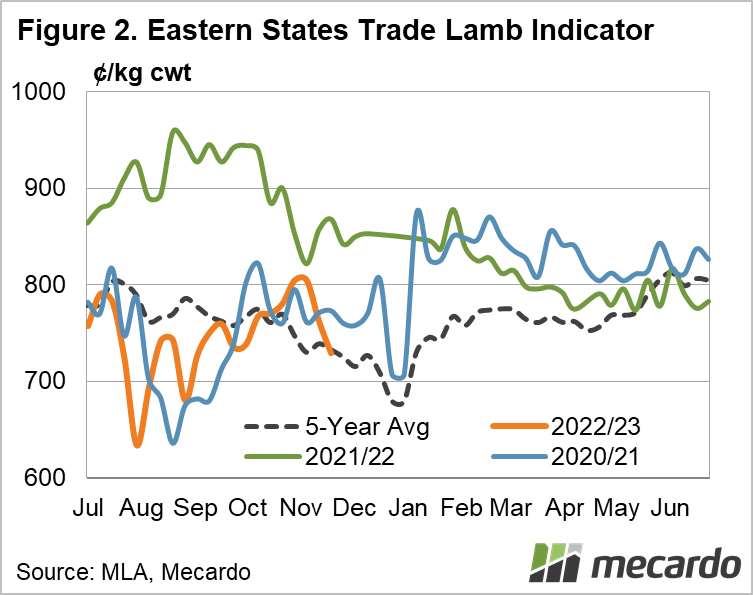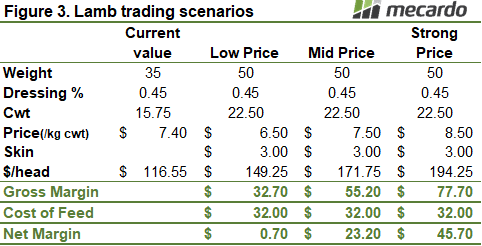After the extreme doldrums of August and September, things were looking up for store lamb producers. Up to a fortnight ago prices had rallied back to five year average rates, and were trending higher. What a difference a fortnight makes.
It doesn’t feel like it, with the weather being rather wintery, and cricket season making a spluttering start, but we’re halfway through November. It is now when the big runs of lambs generally start to hit the market, and we have seen saleyard numbers growing in recent weeks.
The flush of lambs at the saleyards, along with processors who seem to be well booked up, means there are a lot of lambs looking for homes back on farm. There is not a lot of confidence amongst those who would normally buy store lambs at this time of year, and it’s telling in the price.
Figure 1 shows the NSW Restocker Lamb Indicator has fallen 135¢, or 15.5% to 740¢/kg cwt. Much of the blame for the weak demand for restocker lambs can be put down to the slow harvest. Lambs would normally start going out onto stubbles now, but many crops are quite a way off harvest. This means lambs can only go back to pasture, which are sodden, and probably carrying a lot of stock already.
The result is cheap store lambs, basically at the same ¢/kg price as their finished counterparts this week. Figure 1 shows that store lambs were priced at a similar level in spring 2019, and they were also at a similar price to the Eastern States Trade Lamb Indicator (ESTLI) that year. The last two springs have seen stores at a 100-200¢/kg cwt premium to the ESTLI.
A big part of the store lamb price matrix is the future price of finished lambs. There is plenty of uncertainty in this area too. Figure 2 shows the ESTLI for this year, last year and 2020-21. This year’s price trend is following 2020-21 quite closely, but we know there are a lot more lambs about this year.
What does it mean?
Figure 3 shows that buying store lambs is showing some pretty good returns at the moment, if the finished lamb price holds of course. If lambs are finished on pasture there is still a reasonable gross margin factoring in a finished price of 650¢. A return to 850¢ lambs would make for a very profitable trade, even when finishing on grain.
Have any questions or comments?
Key Points
- Store lamb prices have fallen with the general market, at three-year lows for this time of year.
- Restocker lambs are also cheap relative to finished lambs, priced at a similar level.
- Cheap store lambs open opportunities for those able to finish them.
Note: trading scenarios do not account for costs (apart from feed), due to variability between operations. They should be used as general information.
Data sources: Mecardo; Meat & Livestock Australia;















